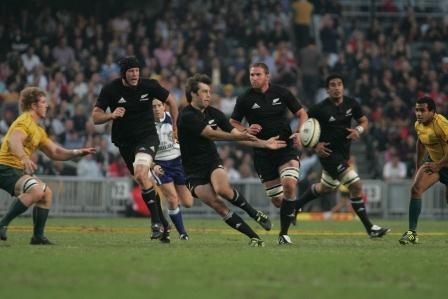- Rugby Toolbox
- Resources & Education
- Learn more
- Articles
- Snook on Coaching
- Looking and Learning
- Ruck & Run Drill
- Playing Philosophy – Ruck & Run Coaching Components
- Playing Philosophy – Spread the Forwards
- Playing Philosophy – A forward behind the ruck
- Playing Philosophy – Ruck & Run
- Playing Philosophy – An idea!
- The Breakdown
- Building Positivity [3]
- Building Positivity [2]
- Building Positivity
- Fitness and Game Related Activities
- Getting the Head Working
- Missiles are Dangerous
- Use of Video
- Winger Attacking Outside First-Five
- Player Profiling
- Selection
- Fitness Away from the Team Session
- Playing Philosophy (Pre season Prep)
- Coaching the Coaches
- The Rugby Coordinator and Pre-Season Preparation
- Why Not Use Tap Penalties More Often?
- Why Kick the Ball Down the Middle of the Field?
- Defending the 5 Metre Lineout Drive
- Scoring from the 5 Metre Lineout
- What are the Kicking Team Aiming to Achieve from Halfway Restart
- Should We Practice Scoring Tries?
- Team Culture
- Looking After Your Players
- Coach Survival Tips
- Under 11/13 – Backline Defence
- Under 11/13 – Ruck Defence
- Under 11/13 – Back Attack
- Under 13 – The Counter Attack
- Under 11/13 – The Maul
- Under 11/13 – Lineouts
- Under 11/13 – Decision Making
- Under 11/13 – Support Play
- Under 11/13 – Dive Pass and More
- Under 11/13 – Drop & Grubber Kick /Highball Catch
- Under 11/13 – Front on Tackling
- Under 11/13 – Contact – Getting Up – The Ruck
- Under 11/13 – The Coaching Session
- Under 8/10 – Using Space
- Under 8/10 – Kicking
- Under 8/10 – Contact and Picking Up the Ball
- U8/U10 Draw & Pass and Sidestep
- Under 8/10 – The Tackle
- Under 8/10 – The Coaching Session
- Under 7 – Test Your Coaching – Support Play
- Tap Pass and Swerve U7
- Ball Familiarisation; Passing & Receiving
- Activities for the Non-Contact Tackle
- Under 7 – The Coaching Session
- Coaching Teenagers – After the Ruck
- Coaching Teenagers – The Practice Session
- Coaching Teenagers – Best Practice
- Coaching Kids – Best Practice
- Plays from a Tap Penalty
- Running Plays from a 5 Man Lineout
- Driving Plays from a 5 Man Lineout
- Strike Plays at the End of the Lineout
- Back Strike Plays at the Lineout
- Wide Strike at the Scrum (2)
- Wide Strike at the Scrum
- Midfield Attack at the Scrum
- No 8 Plays at the Scrum (2)
- No 8 Plays at the Scrum
- The Cut Out Pass
- Skills to Penetrate (2)
- Skills to Penetrate
- Movements to Penetrate
- Patterns to Penetrate
- Contact and Continuity
- Keeping the Ball Alive Out Wide
- Pre Season Support Activities
- Checklist
- Understanding the game
- The Playing Philosophy
- The Lineout
- Overview
- Team Profile
- Start Now!
- Backrow
- Nine and Ten
- Rugby-related Fitness Activities
- The Psychological Edge
- Open Field Play
- Key Performance Indicators
- Improving Team Performance
- Backline Attack Concepts
- Tactics at Phase Play
- Playing Philosophy
- The ‘Stop Focus’
- Kick Attack
- Clearing the 22
- Wide Attack at Phase
- Player Focus
- Scrum Preparation
- Lineout Preparation
- Back Attack Preparation
- Sevens Preparation
- Sevens Kick Offs
- Sevens Scrum and Lineout
- Sevens Attack Patterns
- Sevens Defence
- 7's Selection and Game Planning
- Coaching and Leadership
- How the Game Evolves
- Changing Within the Game
- Learning from the Television.
- Using Tap Penalties Wisely
- Defence Drills
- Defence Drills for Tight Five
- Team Defence and TUB’ing
- Establishing Patterns from the Ruck
- Structured Phase Play
- Structuring Phase Play on the Run
- Coaching Roles
- Structuring a Close in Tackling/Defensive Session
- Coaching in Threes
- Attacking Back Play
- Kick Off Chase
- Wrap Around Back Plays
- Lineout Plans
- Looking and Learning
- Motivating Your Players
- Scrum Attack
- Refocusing the Team
- Monitoring the Progress
- Learning the Game
- Playing to the Laws
- Small is OK
- Decisions After the Tackle
- Improving Your Coaching
- Food for Thought
- More Food for Thought
- Passing & Catching
- How Ireland Nearly Beat the All Blacks
- The Progressive Coach
- Try Something New
- Encouraging Excitement
- The Mental Approach
- Where to Start
- Being the Best You Can Be
- Off the Ball Decisions
- Lineouts Difficult to Master
- Decisions on the Run
- Rucking and Rolling
- A Successful Approach
- Gaining Clarity
- Manipulation vs Physicality
- Beating the Drift
- To Ruck or Not to Ruck
- Stopping the Lineout Drive
- Fine Tuning the Planning
- It's a Running Game
- RugbySmart 2015
- Using the Shoulders
- Loosehead Prop / Tighthead Prop
- Position Specific – Hooker
- Position Specific – Lock
- Position Specific – Blindside Flanker
- Position Specific – Openside Flanker
- Position Specific – No 8
- Position Specific – Halfback
- Position Specific – First Five Eighth
- Position Specific – Second Five Eighth
- Position Specific – Centre Three-quarter
- Position Specific – Wing
- Position Specific – Fullback
Looking and Learning

With Super Rugby now underway it is a great opportunity to look at these games with the knowledge of your own teams’ strengths and weaknesses, and see what you can learn that you can take forward in to the season.
After only a couple of rounds, and looking at the New Zealand sides, there are some obvious signs in place in the way each franchise is approaching their playing style, probably based as much on the philosophical approach of each coach as much as the personnel in each squad.
Of course it would be great to play an explosive type game such as the Blues are producing, but they have many explosive individuals in their mix. It’s a toughie if you haven’t got these players.
Tying their game together though is a well organized defensive plan and a group that are able to keep the ball in contact and generally win or compete at the physical contact zones.
Both of these aspects take a great deal of strategical and technical coaching before they are easily assimilated in to the plan as a whole. If either of these components of the game interest you then watch them closely, in fact record and study them, so you observe and learn the role of each individual, particularly the first three around the ball area. Get that right and then build.
The Chiefs have an ability to remain calm and focused even if things at the time are not going that well. This composure comes through belief, and belief comes through working so hard at training on a particular aspect that the game seems easier.
Of course they have a highly competent coaching team, but the message is that whatever you choose to focus on, then the follow up work needs to be reinforced and fine tuned at every opportunity. Unlike Super rugby coaches, you have a minimal amount of time to get things right, so choose carefully and train with accuracy and intensity.
The phase play of the Chiefs is well worth studying as it has a slightly different bias than most other rugby teams, and achieves a good balance of physical direct play and a more open style and continuity. I’m sure many club players would enjoy this pattern as against the continuous rucking pattern as they make their way down the field.
Have a look and see what makes this different and write a list of the strategies and technical skill requirements. I’m sure much of this could be achieved if you are prepared to spend the time on it and develop skill and pattern drills that are suitable to your team. You’ve got the concept, now develop how you are going to introduce and fine tune the pattern during your training. This is what coaching is all about.
If your players are keen on improving than chat to them and choose a player for them to watch during a match. Where does this player position himself in certain situations? What skills does he require that your player could develop? What is it that makes this player good in his position? Choose one or two aspects and get to work. As the coach you will need to drive this. Keep it simple and fun.
Get as many players as possible learning through the same process and if you are really clever you could get some mini units studying their positions together and forming some plans and plays. I’d imagine a lot could be learned by studying Kieran Read, Andy Ellis and Dan Carter at the Crusaders and see how they interact and what effect they have on the game.
A lot of interest can be created by developing some of your game plan around this type of philosophy. Once you get it underway then keep an eye on the franchise and see how they develop it further. This is what coaching is about. Keeping a step ahead.